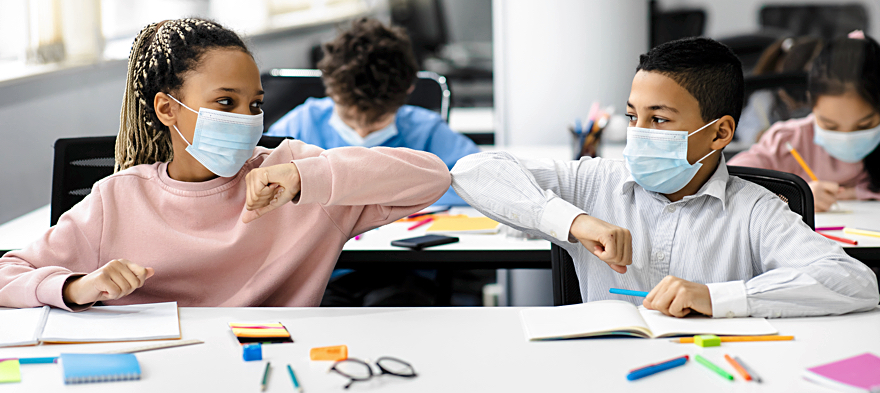
Apr 20, 2021 12:00:00 AM
With the end of the pandemic in sight and some communities already reopening, it is time to understand what it will take for special education teachers to transition back to in-person learning. The desire to “return to normal” as quickly as possible will be strong, but it is important to recognize that special education students may experience many challenges. With a clear plan and a bit of patience, you can smooth the transition, minimize disruption, and maximize the opportunity to make up for skill losses that may have occurred over the past year.
While many students (and teachers) have learned new skills to adapt to at-home schooling, many students with disabilities have lacked the support services they need. Despite the best efforts of these students, as well as their caregivers and staff, data shows that virtual learning has resulted in a learning slide.
[pullquote]Only with updated formal and informal assessments can you obtain the data you need to ensure you are targeting the content and lessons students need to compensate for the disruption they have encountered.[/pullquote]
It is also important to update IEPs with this valuable new assessment data. It is possible students did not make the expected progress on IEP goals during virtual instruction, so it is critical to account for this in IEP data collection, document all current activities, and assess where each student is currently functioning. Updated data is also the best way to provide your special education team with the information they need to offer access to the right resources and accommodations.
Virtual learning may have shown how certain students in general education were struggling and these students may now require evaluation for additional services. However, over the last year, many districts considered remote IEP eligibility testing infeasible, so these students are likely still not evaluated, and you may face a huge backlog of testing needs and referrals when at-school learning resumes. Start working on a plan now for how your teams will work through this backlog and prioritize activities. Then, work with general education teachers to help them implement necessary student accommodations.
In most schools, virtual learning has required closer collaboration with the families and caregivers of students who receive special education support - keep these families involved as you return to the classroom. They can provide essential information for developing IEP goals because they have likely learned a lot about what works well for their individual students, and they can help you foresee challenges that may arise with the return to in-person learning.
Here are just a few ideas for partnering with caregivers to smooth the transition back to school:
For many special education students, a second complete change in routine will be jarring, and some will have completely forgotten expected school behavior and requirements. It will be important to communicate expectations, routines, schedules, behavior guidelines, and any new Covid-related hygiene requirements. Use all the tools in your toolbox, including student-led discussions and brainstorming, sort cards and anchor charts, self-regulation SEL tools, read-alouds, positive rewards, choice boards of coping skills, YouTube videos, etc.
Be deliberate about repetition and be patient.
Rebuilding in-person relationships is essential for completing the transition back to the classroom. A few suggestions include:
[pullquote]The only thing you can be certain about when it comes to returning to in-class learning is that it will take time for you and your students to adjust.[/pullquote] You cannot prepare for every possible student reaction or the other difficulties that may arise. As special education teachers, I know you can rise to the challenge.
Rachael Storey is a consultant at Riverside Insights, and a former special education teacher in Michigan.
She received her undergraduate degree from the University of Michigan and her graduate degree in urban special education from Cardinal Stritch University in Milwaukee. Rachael currently holds a professional teaching license in Michigan K-12 special education with endorsements in both learning disabilities and cognitive disabilities and has enjoyed teaching all levels of students over the past ten years.
Few issues in education spark more tension and debate than standardized testing. Are they a tool for equity or a burden on students? A necessary check on school systems or a flawed measure of...
Charter schools are public schools with a purpose. Operating independently from traditional school districts, they're tuition-free, open to all students, and publicly funded—but with more flexibility...
Despite the benefits of a diverse teaching force, prospective teachers of color fall out of our leaky preparation pipeline at every stage: preparation, hiring, induction, and retention. Here’s what...
Ed Post is the flagship website platform of brightbeam, a 501(c3) network of education activists and influencers demanding a better education and a brighter future for every child.
© 2020-2025 brightbeam. All rights reserved.
Leave a Comment